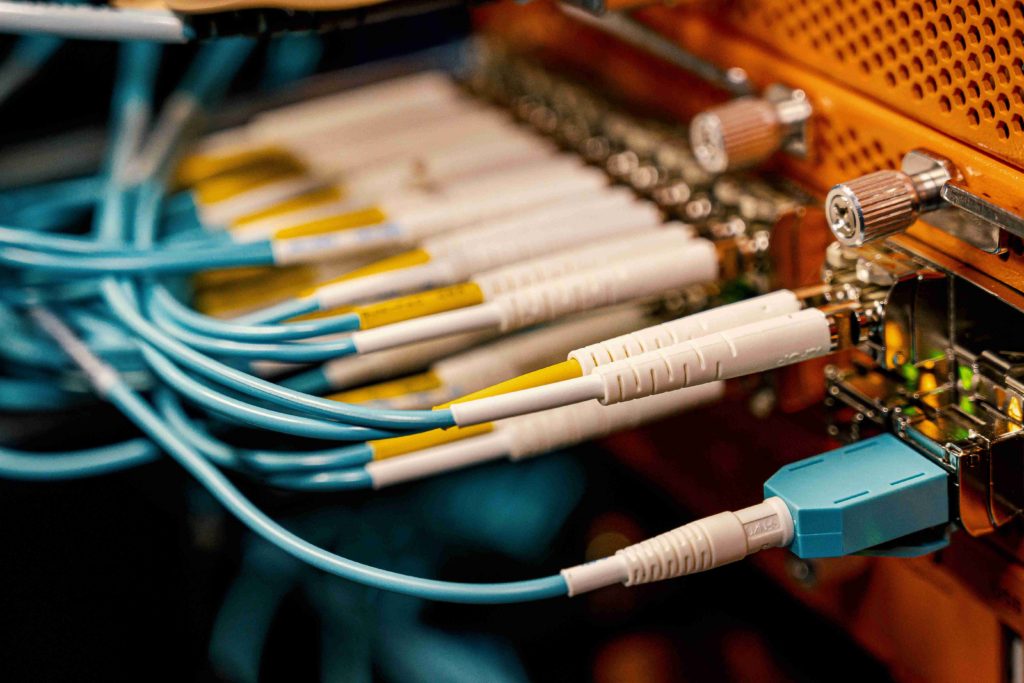Perhaps many network engineers have a question. When designing an fiber-optic communication network, whether to choose a single-mode fiber optic cable or a multi-mode fiber optic cable for different transmission scenarios? What are their specific characteristics and advantages? So, through this article today, we share our understanding with you.

Multi-mode fiber-optic
When the geometric size of the fiber (mainly the core optical bare fiber diameter d1) is much larger than the wavelength of the light wave (about 1µm), there will be dozens or even hundreds of propagation modes in the fiber. Different propagation modes have different propagation velocities and phases, resulting in time delay and widening of optical pulses after long-distance transmission. This phenomenon is called the modal dispersion of the fiber (also called intermodal dispersion).
Most of the refractive index distributions of multi-mode optical fibers are parabolic distributions, ie graded refractive index distributions. Its core fiber diameter is about 50µm.

Single-mode fiber-optic
When the geometric size of the fiber (mainly the core optical bare fiber diameter) can be close to the wavelength of light, such as the core diameter d1 in the range of 5-10µm, the fiber only allows one mode (fundamental mode HE11) to propagate in it, and the rest of the higher-order modes are all cut off , such a fiber is called a single-mode fiber-optic.
Since it has only one propagation mode, the problem of modal dispersion is avoided, so single-mode fiber-optic can have longer transmission distances than multi-mode fiber-optic. Therefore, to achieve single-mode transmission, the parameters of the optical fiber must meet certain conditions. It is calculated from the formula that for a fiber with NA=0.12 to achieve single-mode transmission with λ=1.3μm or more, the core radius should be ≤4.2μm, that is, the core diameter d1≤8.4μm.
Since the core diameter of the single-mode fiber-optic is very small, more stringent requirements are placed on its manufacturing process.
Advantages of fiber-optic communication
1. The passband of the fiber-optic is very wide, and the theoretical value can reach 30T.
2. The support length without a repeater can reach dozens to hundreds of kilometers, and the copper wire is only a few hundred meters.
3. Unaffected by electromagnetic fields and electromagnetic radiation.
4. Lightweight and small size.
5. Fiber-optic communication is not charged and can be used safely in explosive places.
6. Wide range of ambient temperature for use.
7. Long service life
How to choose different modes of fiber optic cable?
Combined with the differences between a multi-mode and single mode that we briefly described above. We can roughly draw the following conclusions:
- The single-mode fiber optic cable will not have chromatic dispersion and has a longer transmission distance;
- The multi-mode fiber optic cable has greater bandwidth capacity.
Perhaps a few years ago, many people discussed that single-mode fiber optic cable would be more expensive than multi-mode fiber optic cable because of its stricter manufacturing process. However, due to the development of the fiber-optic communication industry in recent years, the larger-scale production of single-mode optical bare fiber, and a large amount of capital invested in-process research and development, its cost is lower than that of multi-mode fiber optic cables.
So, to put it simply, if we use it in the daily home network, group business network, intercontinental, international network, etc., the single-mode fiber optic cable is the first choice.
Multi-mode fiber optic cables are more of a choice in data centers (subject to transmission distance). But its excellent bandwidth capacity is still widely used in communication networks.
Another point we should pay attention to is that if considering the relay with a certain section of fiber optic cable that has been laid, the fiber optic cable that is consistent with the laid fiber optic cable mode should be selected.
